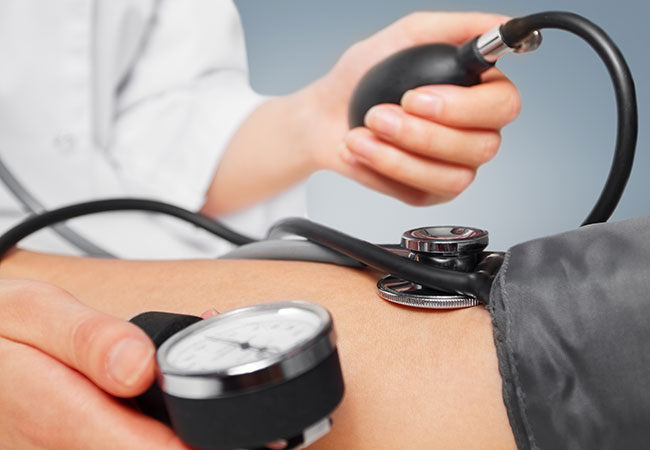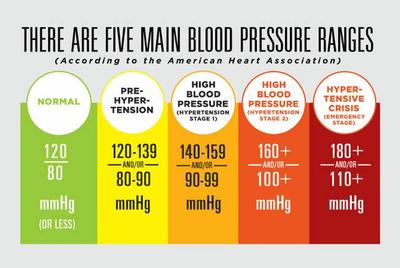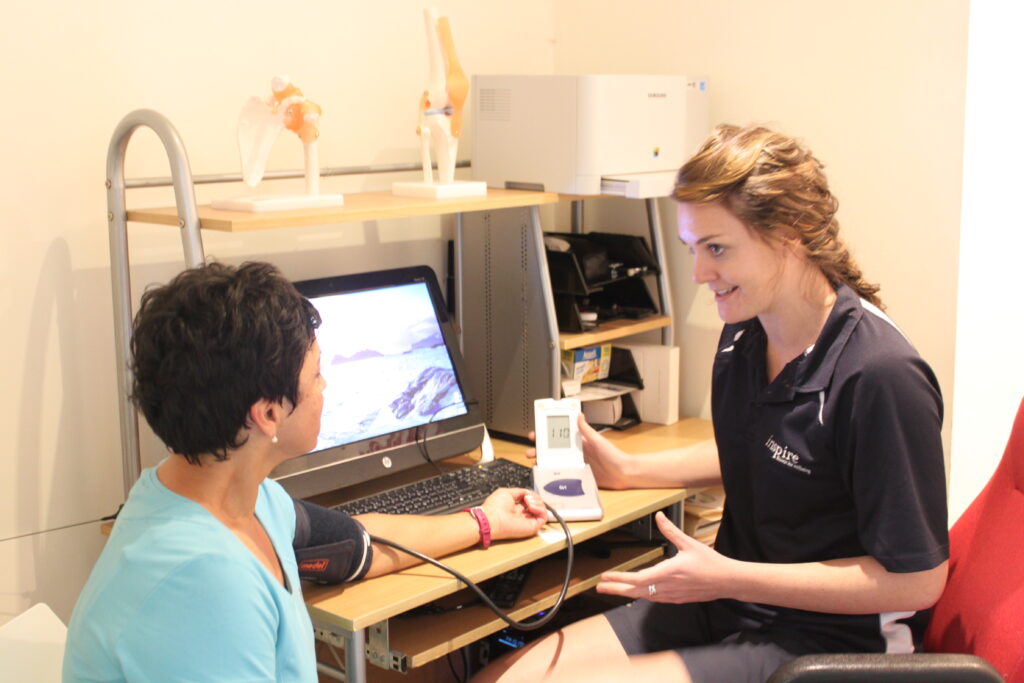Written by Alex Allegro (Accredited Exercise Physiologist)
Hypertension (HTN) – what is it?
The common name, “high blood pressure” refers to a disease characterized by a sustained systemic elevation of blood pressure against arterial walls of blood vessels.
The most common, type 1 HTN, has no known cause. Common risk factors associated with the condition include:
- Genetics
- Age
- Being overweight/ obese (waist circumference (>102cm [men] or >88cm [women])
- Excess sodium consumption
- Excess alcohol consumption
- Sedentary lifestyles/physical inactivity
Before we delve deeper into the topic, there is a few definitions we need to understand about what a “normal” blood pressure reading is. A blood pressure reading will present two numbers, which are measured in millimetres of mercury.

The first number refers to “systolic blood pressure”, which is the pressure of the blood against the arterial walls when the heart muscle is contracting. The second number, “diastolic blood pressure” refers to the pressure of blood against the arterial walls when the heart muscle in relaxing.
Here is a table of normative ranges for blood pressure:

Does My Blood Pressure Matter?
Whilst people with HTN may not experience any symptoms, due to HTN being known as a “silent disease”, the effects can be detrimental to an individual’s health. Globally, research has shown for HTN to be the leading cause of strokes, irrespective of what part of the world we live in. (1, 2) Additionally, according to Exercise and Sport Science Australia, HTN accounts for 40% of all cardiovascular disease. (3) HTN can further progress into other forms of heart disease, as well as be a common co-morbidity of other lifestyle related conditions such as type 2 diabetes – reflecting a lack of physical activity and appropriate nutrition.
The Effect of Exercise on Blood Pressure?
There have been several research studies highlighting the important benefits of exercise for not only an individual’s overall health, but for their blood pressure too.
When exercising, initially there will be a spike in blood pressure due to the demands of the activity, however, in the hours following exercise, research has been able to clearly identify a positive relationship between exercise and blood pressure lowering.
The lowering effect is known clinically as “post exercise hypotension” (PEH). (3). PEH works by causing systemic vasodilation of our blood vessels, therefore helping reduce the amount of pressure against our vessels. Research has shown exercise can also have lasting PEH effects from 12 up to 22 hours (4).
So why is this important? Well not only can exercise have an acute effect on positively lowering blood pressure, if done repeatedly, the constant acute effect of exercise can also then turn into a chronic reduction in an individual’s blood pressure. (3, 4).
What Kind of Exercise Should I be Doing?
Well, it depends. High Intensity Interval Training (HIIT) has been shown to be the most effect exercise type at causing this PEH affect (3, 4). However, any form of moderate-hard exercise can elicit some acute lowering affects (3, 4). It should be noted, that although HIIT may be the most effective, any exercise is better than none, and something as small as a walk outside may have some slight improvements, as well as may have positive mental benefits through fresh air and if you are exercising with a friend. (3, 4)
Continuing on, apart from the PEH affect of exercise, those who participate in an exercise program and make healthier nutritional choices have been shown to reduce the prevalence of strokes, obesity and lifestyle related conditions as mentioned previously. These changes can also see large improvements in one’s health, highlighting the overall countless benefits of exercise. (3, 4)
If you would like to find out more about how your lifestyle and exercise could help improve your blood pressure and overall health, get in contact for a consultation today!
Disclaimer: This blog should not be taken as medical advice. Some forms of exercise may be contraindicated for individuals with different co-morbidities. Seek out an individualized plan from an allied health professional if you would like specific recommendations for you and your medical history.

References:
- O’Donnell MJ, Chin SL, Rangarajan S, Xavier D, Liu L, Zhang H, Rao-Melacini P, Zhang X, Pais P, Agapay S, Lopez-Jaramillo P. Global and regional effects of potentially modifiable risk factors associated with acute stroke in 32 countries (INTERSTROKE): a case-control study. The lancet. 2016 Aug 20;388(10046):761-75.
- Aigner A, Grittner U, Rolfs A, Norrving B, Siegerink B, Busch MA. Contribution of established stroke risk factors to the burden of stroke in young adults. Stroke. 2017 Jul;48(7):1744-51.
- Sharman JE, Smart NA, Coombes JS, Stowasser M. Exercise and sport science australia position stand update on exercise and hypertension. Journal of human hypertension. 2019 Dec;33(12):837-43.
- Stand AP. Exercise and hypertension. Med Sci Sports Exerc. 2004;36:533-53.
